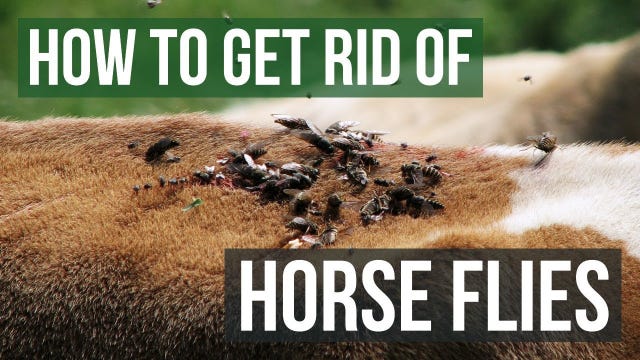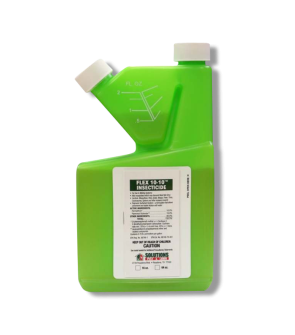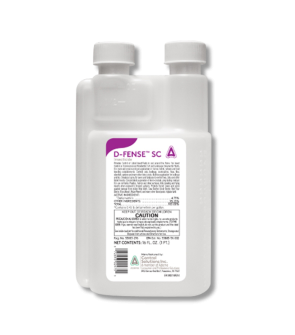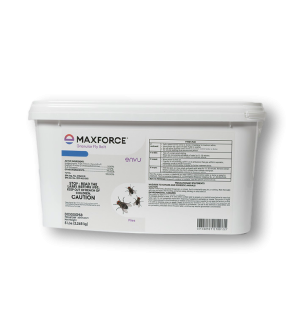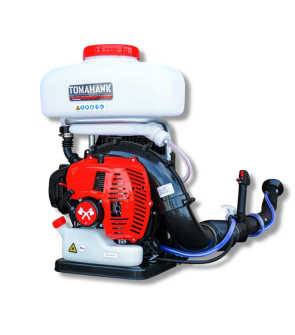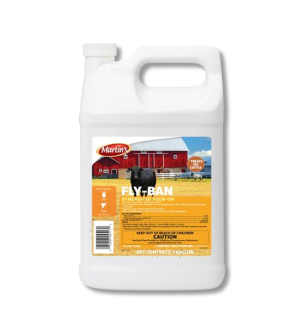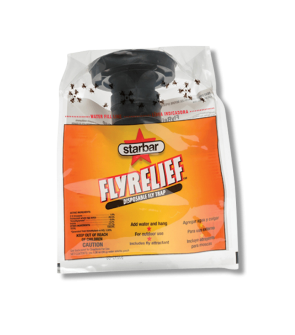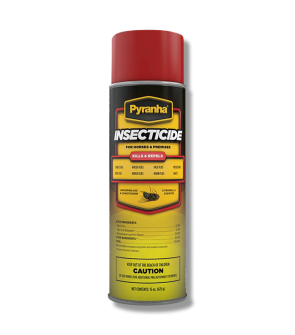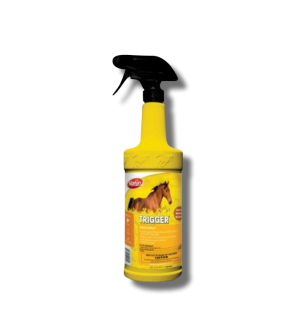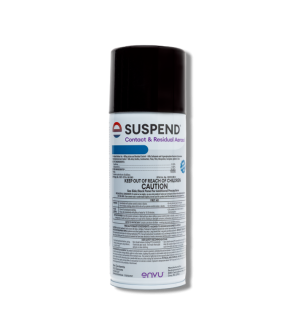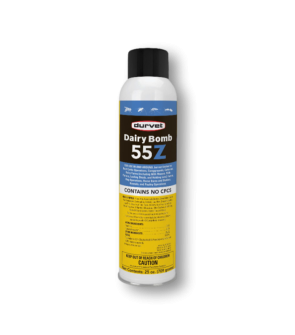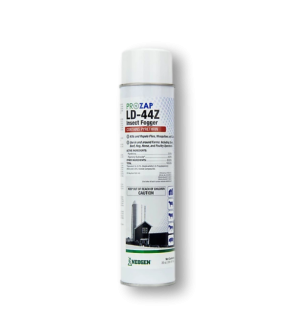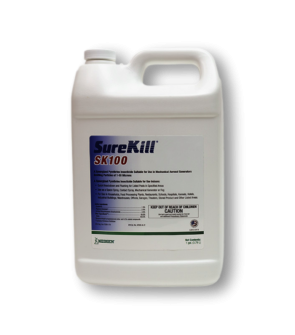Gain access to personalized product screening, the best pricing, rewards, and more!
Most Effective Products
Horse Fly Control: How To Get Rid of Horse Flies
This page is a general horse fly control guide. Using the suggested products and methods will reduce the population of horse flies. Follow this guide and use the recommended products, and we guarantee a great reduction in your population of horse flies.
Horse flies are one of the most aggressive species of fly. Unlike a common housefly, horse flies have sharp, blade-like mouthparts that can tear into flesh. This makes them a big irritant wherever they are found. Horse flies frequently infest farms, where they rip into livestock, biting them and drawing blood. They even get their name from their tendency to attack and feed on horses in pastures.
Horse flies are larger than most flies, ranging between 1/2 an inch and 1.25 of an inch in size. They are most active in the summertime and are known to hang around warm and humid areas. Horse Flies require lots of blood to produce eggs. As a result, horse flies feed and live close to livestock and humans, which is why they are most often found near farms.
If you have a horse fly problem on your property, you can eliminate them with the right knowledge and professional-grade products. Follow our guide below for more information on eliminating this bothersome pest.
Identification
Before proceeding with treatment, it is important to correctly identify the pest in question and confirm that it is indeed a horse fly. Careless identification can lead to using the wrong treatment products, which is ineffective and a waste of time and money. Here are some key characteristics of house flies so you know what they look like:
- Horse flies can often be confused with the common housefly, except they are much larger and have a horn-shaped antenna.
- They can grow up to 1.25 inches in length, and their bodies vary in color from grey to black or brown.
- They have two dark-colored wings.
- Perhaps the best identifier of the insect being a horse fly is that they bite. They are bloodsuckers and will readily bite horses and other large animals and even humans.
- Horse fly bites are painful for livestock and horses, and you will be able to notice the markings left behind on your animals when they are gathered.
Use the image and description above to correctly identify horse flies on your property. If you are not sure, contact us with a high-quality image of the pest, and we will help you try to identify the insect properly.
Inspection
Once you confirm that the pest you are having issues with is horseflies, you can proceed with an inspection. In this phase, you will mainly observe where the horseflies are most active and how severe your problem is.
Gauging the severity of the infestation will help you determine whether you need to conduct a light treatment application or a heavy treatment program that incorporates multiple methods of control.
Where To Inspect
Observe areas close to animal quarters, near manure holding facilities, and where livestock frequents. Horse flies can also be found near pastures, ponds, compost piles, or even swimming pools in residential homes.
What To Look For
It would be best to look for horse fly activity and where they are the most concentrated. Observe horse flies during the day, find out when they are most active, and gauge the severity of the infestation. Once you have determined the size of the infestation and the places they frequent, you will know where to apply treatment.
Treatment
Once you have confirmed horse fly activity, it is time to begin treatment. Remember to read all product labels and follow the application instructions on these labels and stay safe by wearing personal protective equipment (PPE).
Most infestations occur outdoors, so the treatment will be focused on this. We recommend using a combination of Fly Relief Fly Traps, Pyranha Equine Spray & Wipe (only for horses), Flex 10-10, Pivot IGR, and Maxforce Granular Fly Bait.
Step 1: Trap Flies with Fly Relief Fly Traps
Fly Relief Fly Traps should first be used to reduce the Horse Fly population. They are disposable, insecticide-free traps for outdoor use and can trap more than 10,000 flies. Remove the plastic seal at the top to activate the trap and pull on the tab until it snaps in place. The Fly attractant is inside the trap in a dissolvable bag and must be activated with water.
Fill the product with water up to the fill line and then hang it in places where horsefly activity has been observed. For better results, buy multiple traps and place them in every place where you have noticed activity.
Step 2: Protect Your Horses with Pyranha Equine Spray & Wipe
Pyranha Equine Spray & Wipe is a repellent that kills and repels horse flies from coming close. This product is only for horses (do not apply to other livestock). It can be wiped or sprayed on.
Before applying, remove excess dirt or dust. If using as a wipe, make sure the horses are cleaned (shampooed and rinsed) and dry before applying treatment. You will apply this product in 1 to 2 ounces (for wipes and spray applications).
If spraying, apply a light mist over the problem areas while brushing lightly against the lay of the hair. If spraying, avoid eyes and mucous membranes. Use a sponge or a cloth in these areas. For full, detailed application instructions, read the label.
Step 3: Broad Spectrum Control With Flex 10-10 & Pivot 10 IGR
Use a combination of Flex 10-10 and Pivot IGR for total broad-spectrum control of horse flies. Flex 10-10 is a powerful insecticide liquid concentrate specially designed for use on misting and fogging equipment (to treat large areas like stables and barns).
Pivot IGR is an Insect Growth Regulator used to target the undeveloped stages of flies (like larvae) to prevent the population from growing.
We recommend misting or fogging large areas like barns and stables. If you're using it around smaller areas (like residential homes or small spaces), you can also use a pump sprayer. Mix 4 teaspoons of Flex 10-10 with 4 mL of Pivot 10 per gallon of water to treat 1,000 sq. ft. Typically, you'll want to apply it to window frames, doors, and along surfaces.
Step 4: Apply Maxforce Fly Bait
Finally, apply Maxforce Granular Fly Bait around your property to prevent further infestations. This product is a granular bait that can spread around the property, be used in fly bait stations, or painted on surfaces. To paint on surfaces, dilute the granular bait in a small jar with water. The result should be a red paste that can be applied with a paintbrush.
To keep horse flies away, apply the product to walls, fencing, surfaces around the perimeter, and where you may have your horses or cattle gathered.
Prevention
Once horse flies have been controlled, you want to make sure they don't make a return. Here are some preventative measures to take to keep horse flies off of your horses and your property:
- Preventative treatments of Maxforce Granular Fly Bait to the perimeter of your property are recommended.
- Exclusion measures like fixing broken screen doors or adding screens to every vent and chimney in the home will prevent them from coming in. Also, use caulk or foam to seal and fill any slits, gaps, or openings where Horse flies might enter the property.
- If you own a farm, manure management is crucial. Remove manure from barn stalls as quickly as possible. This includes cleaning the barn, water troughs, shady areas, run-in sheds, and gates from any excess excrement. Also, make sure your waste areas are sealed with tight lids and lined with plastic bags. This will reduce odors and attract fewer flies waiting to lay eggs.
- If possible, keep garbage areas as far away as possible from the barn itself. The area where you feed your horses can also be a prime breeding ground. Make sure you sweep out the feed room each day to avoid spilled feed laying out to rot. All horse feed should be tightly sealed in containers when not eaten by the horses.
Key Takeaways
What are Horse Flies?
- Horse flies are irritating pests known for delivering painful bites and infesting in large numbers around farms and barnyards.
- Unlike a common house fly, horse flies have sharp, blade-like mouthparts that can tear into flesh. This makes them a particularly big irritant wherever they are found, especially around farms, where they harm livestock by biting them and drawing blood.
- Horse flies are known for their tendency to attack and feed on horses in pastures.
How To Get Rid of a Horse Flies
- To get rid of horse flies, you will need to use a combination of traps (Fly Relief Fly Traps), Insecticides (Flex 10-10 and Pivot IGR), repellents (Pyranha Equine Spray & Wipe), and bait (Maxforce Granular Fly Bait).
Preventing Horse Fly Reinfestation
- To keep flies away from your horses and/or property, preventative treatments of Maxforce Granular Fly Bait should be conducted monthly, as well as cleaning and managing manure weekly.






